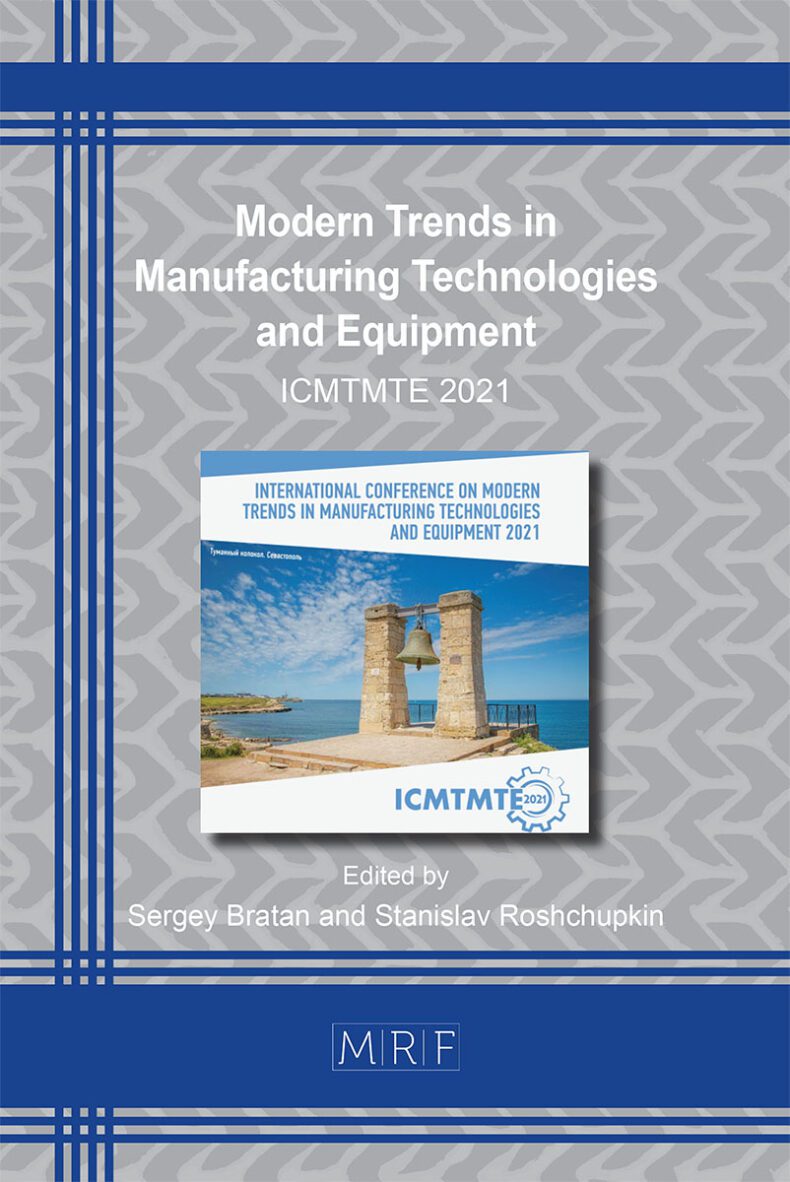Influence of Pressing Temperature on Wood Properties
Maria Romanenko
download PDFAbstract. Obtaining wood with high performance properties on the basis of chemical and mechanical action as a result of optimization of technological processes and the use of temperature exposure. The initial raw material is hardwood (aspen, alder), which are little used in construction and in the production of finishing materials. The condition for obtaining wood with high operating properties (increasing density, strength, reducing water saturation, ensuring the dimensional stability of samples for a long time) is the ability of wood as a natural polymer to change properties under the combined effect of temperature and pressure.
Keywords
Hardwood, Cellulose, Lignin, Amorphous Polymer, Compression, Thermostatted, Density, Wood Processing, Finishing Material
Published online 1/5/2022, 4 pages
Copyright © 2022 by the author(s)
Published under license by Materials Research Forum LLC., Millersville PA, USA
Citation: Maria Romanenko, Influence of Pressing Temperature on Wood Properties, Materials Research Proceedings, Vol. 21, pp 32-35, 2022
DOI: https://doi.org/10.21741/9781644901755-6
The article was published as article 6 of the book Modern Trends in Manufacturing Technologies and Equipment
![]() Content from this work may be used under the terms of the Creative Commons Attribution 3.0 licence. Any further distribution of this work must maintain attribution to the author(s) and the title of the work, journal citation and DOI.
Content from this work may be used under the terms of the Creative Commons Attribution 3.0 licence. Any further distribution of this work must maintain attribution to the author(s) and the title of the work, journal citation and DOI.
References
[1] A. Burmester, Effect of heat-pressure-treatment of semi-dry wood on its dimensional stability. Holz Roh-Werkst, 31 (1973) 237-243.
[2] E. Giebeler, Dimensional stabilization of wood by moisture-heat-pressure-treatment. Holz RohWerkst, 41 (1983) 87-94. https://doi.org/10.1007/BF02608498
[3] A.J. Stamm, Wood and cellulose science, Ronald Press, New York, USA, 1964.
[4] B. Esteves, A.V. Marques, I. Domingos, H. Pereira, Influence of steam heating on the properties of pine (Pinus pinaster) and eucalypt (Eucalyptus globulus) wood. Wood Science and Technology, 42(3) (2007) 193-207. https://doi.org/10.1007/s00226-006-0099-0
[5] O. Unsal, S.N. Kartal, Z. Candan, R.A. Arango, C.A. Clausen, F. Green, Decay and termite resistance, water absorption and swelling of thermally compressed wood panels. International Biodeterioration & Biodegradation, 63(5) (2009) 548-552. https://doi.org/10.1016/j.ibiod.2009.02.001
[6] O. Unsal, S. Korkut, C. Atik, The effect of heat treatment on some properties and colour in eucalyptus (Eucalyptus camaldulensis Dehn.). Wood. 11th International IUFRO Wood Drying Conference – 2010, 398 MADERAS: Ciencia Y Tecnologia Journal, 5(2) (2010) 145-152. https://doi.org/10.4067/S0718-221X2003000200006
[7] V.A. Shamaev, P.A. Smirnov, N.A. Trubnikov, O.A. Kalinin, V.G. Rakhmanov, I.N. Medvedev, E.A. Dolgikh, The main directions of wood. Technology and equipment of woodworking in the XXI century: interuniversity. sat. scientific. tr., VGLTA, Voronezh, (2005) 161-167.
[8] P.P. Erinsh, Study of the structure and destruction of the ligno-carbohydrate matrix of wood. Dis. … Dr. chem. sciences. Riga, 1976.
[9] P.P. Erinsh, The structure and properties of wood as a multicomponent polymer system. Wood Chemistry, 1 (1977) 8-25.
[10] S.S. Pesetskii, B. Jurkowski, Y.A. Olkhov, O.M. Olkhova, I.P. Storozhuk, U.M. Mozheiko. European Polymer Journal, 37 (2001) 2187–2199. https://doi.org/10.1016/S0014-3057(01)00120-3
[11] I.I. Romanenko, M.I. Romanenko, Directional modification of the properties of hardwood. Science diary, 11(11) (2017) 19.
[12] I.I. Romanenko, M.I. Romanenko, Modern technologies for the creation of modified wood from hardwood. Ural Scientific Bulletin, 10(2) (2016) 90-95.































